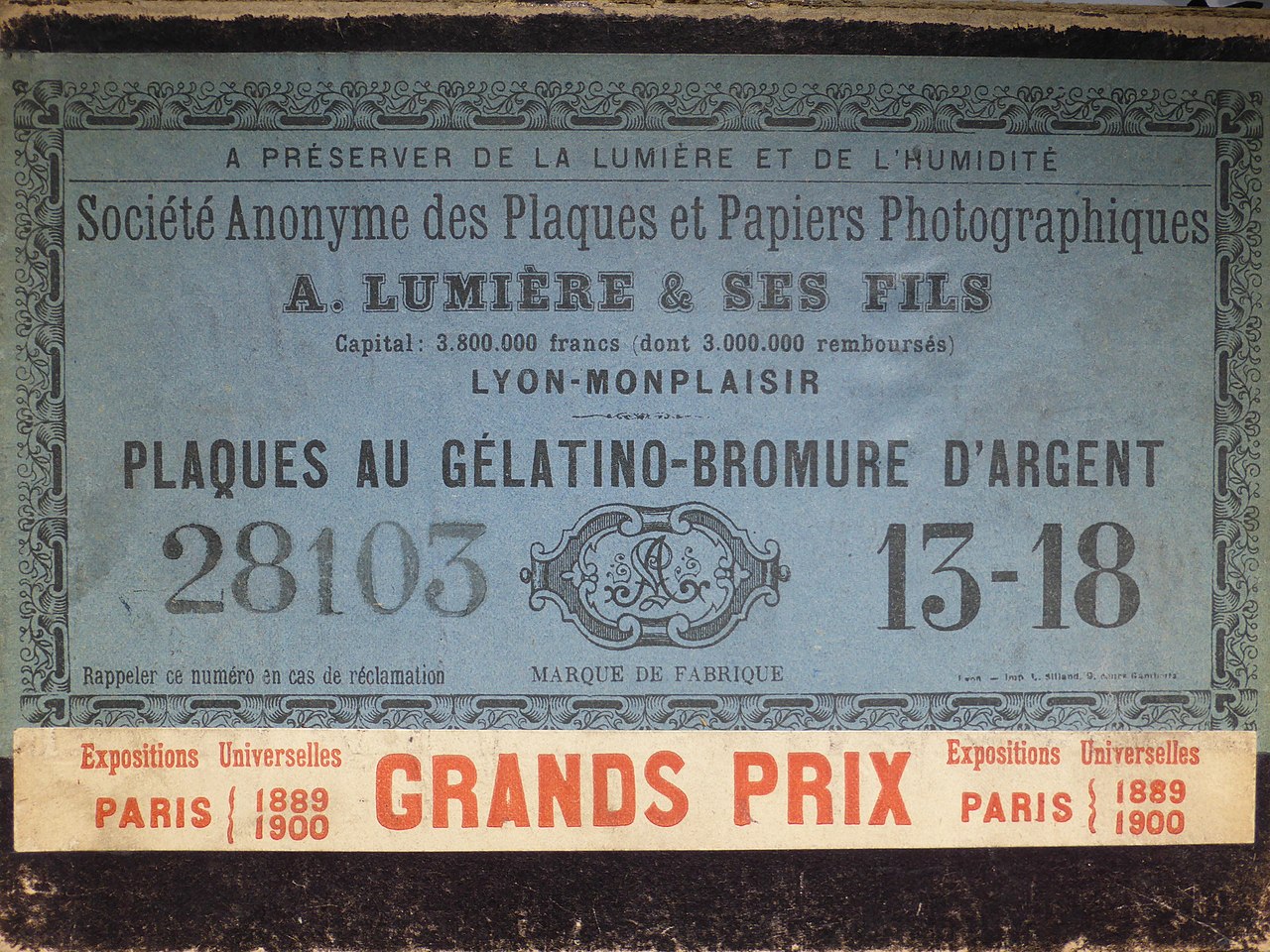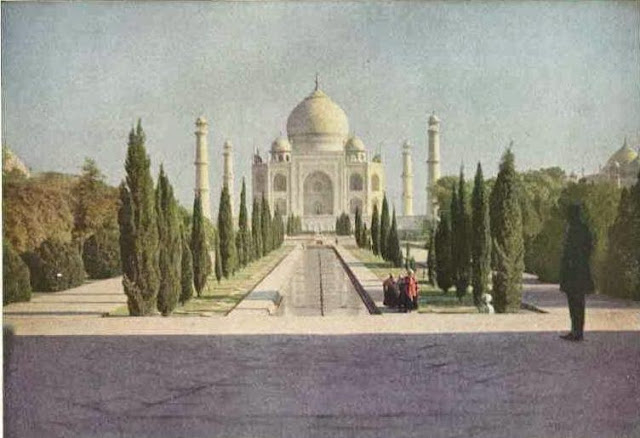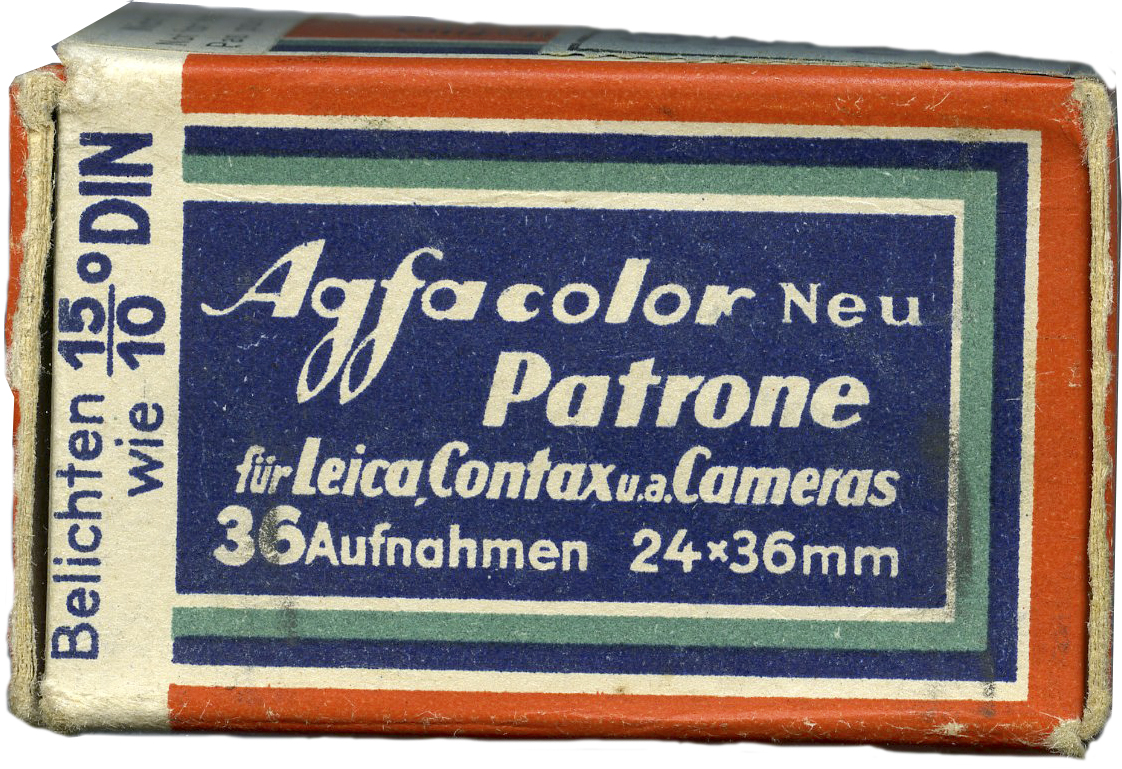By Heinz Richter
Many are familiar with the history of the Leica and its influence on photography in general. The photographic analog process Leica relied on essentially was no different from what we are using today. Many of the early Leica photographs are well known. Quite a few were taken by Oskar Barnack, the inventor of the Leica, himself.

Wetzlar Eisenmarkt 1914
Photo: Oscar Barnack
The earliest permanent photograph in existence was made in 1826 by Joseph Nicéphore Niepce, showing the roofs and chimneys visible from his workroom. It required an exposure time of eight hours on a bright, sunny day. He used a pewter plate with a light sensitive varnish of asphalt (bitumen if Judea) and then used oils as a fixing agent. During the exposure, various areas of the asphalt would harden to different degrees. The oils washed away the less hardened areas of the asphalt, resulting in a recognizable image. The word snapshot doesn’t apply.

Joseph Nicéphore Niepce photograph from 1826
Niepce’s process proved to be a dead end. Through the company of Chevalier, the major manufacturer of lenses at the time, he met Louis-Jacques-Mandé Daguerre. They formed a company to research other means to take permanent photographs. Unfortunately, Niepce died before they had any success. A nephew of his continued to work with Daguerre, but when a viable process was developed, Daguerre took the credit all for himself. This was the famous Daguerreotype, first introduced in 1839 to the French Académie des Sciences. While a lot faster than Niepce’s first attempts, it still had the drawback of producing just a single picture at the time. There were no negatives from which multiple copies could be made.

"Boulevard du Temple", taken by Daguerre in 1838 in Paris, includes the earliest known candid photograph of a
person. The image shows a street, but because of the over ten-minute exposure time the moving traffic does not
appear. At the lower left, however, a man having his boots polished had both men motionless enough
for their images to be captured.
The first successful negative process was developed by William Henry Fox Talbot in 1840. He used sensitized strips of paper, which, when developed, resulted in a negative which allowed the contact printing of multiple images. Thus the photographic process closest to what we use today, was born.

William Henry Fox Talbot, Laycock Abbey 1847
However, Talbot’s process still had one drawback, the texture of the paper which held the negative image easily transferred to the final print. That problem was solved by the 1850s. Thin glass plates coated with photographic emulsion became the standard material for use in the camera. Although fragile and relatively heavy, the glass used for photographic plates was of better optical quality than early transparent plastic like materials and was, at first, less expensive. Glass plates continued to be used long after the introduction of film, and were used for astrophotography and electron microscopy until the early 2000s.

Box of photographic glass plates
In 1887 Hannibal Goodwin, a minister, patented a celluloid backed photographic rollfilm. He was motivated to search for a non-breakable, and clear substance on which he could place the images he utilized in his Biblical teachings. He filed a patent for "a photographic pellicle and process of producing same ... especially in connection with roller cameras". George Eastman of Kodak fame tried to get a patent for a similar film in 1892, only to learn that Goodwin’s patent was five years older. A bitter court battle lasted eleven years; the patent right finally were given to Goodwin, but by that time his health had deteriorated sharply and he assigned his rights to the Ansco Company. Another court battle started which was not decided until March, 1914. Eastman Kodak Company ended up paying 5 million dollars of restitution.

Karl Kellner

Ernst Leitz I
Photograph by Oscar Barnack with the Ur-Leica
The middle of the 1800s saw the establishment of many of the well-known photographic companies. In 1849 Karl Kellner founded the Optical Institute in Wetzlar. The company was later taken over by Ernst Leitz and was to become the company that established 35mm photography with the Leica. 1867 saw the founding of AGFA in Germany. It is interesting to note that one of the company’s founders was Dr. Mendessohn-Bartholdy, a son of the great composer Felix Mendelssohn. Another giant of the photographic industry, Eastman Kodak was founded a few years later in 1888.
Early transparent roll films were made from highly flammable nitrocellulose, commonly known as celluloid, a highly flammable material. Cellulose acetate or "safety film" was introduced by Kodak in 1908, but first it found only a few special applications as an alternative to the hazardous nitrate film, which had the advantages of being considerably tougher, slightly more transparent, and cheaper.
Initially, black and white films were only sensitive to blue, violet and ultraviolet light which posted quite a few problems. For instance, blue sky was usually rendered as plain white without detail, while bright yellow and red appeared almost black.
Isochromatic or orthochromatic films, depending on the manufacturer, made a more accurate rendering of colored subject matter possible. Because they were still disproportionately sensitive to blue, the use of a yellow filter and a consequently longer exposure time were required to take full advantage of their extended sensitivity.

Lumière Brothers
In 1894, the Lumière Brothers of France introduced their Lumière Panchromatic plate, which was made sensitive to all colors including red, although very unequally. In 1902 the much more evenly color-sensitive Perchromo panchromatic plate was introdiced by the German manufacturer Perutz.
All of these were glass-based plate products. Panchromatic emulsions on a film base did not become available until the 1910s. Many photographers who did their own darkroom work preferred to go with films not sensitive to red to be able to process their exposed film with a red safelight. For instance, Kodak's popular Verichrome black-and-white film remained a red-insensitive orthochromatic product until 1956, when it was replaced by Verichrome Pan.
Early black and white roll films which survived, unused, until today.
The Gevaert film (Gevaert was incorporated into Agfa at a later date) has an expiration date of 1955
The Hauff film expired in 1960 while the Perutz has no expiration date
Virtually as soon as even early photographic processes became available, the quest for color photographs started. The earliest color photographs were actually hand colored daguerreotypes. Simultaneously, a number of individuals experimented with a variety of processes to produce color images. Some were met with limited success while others could not be repeated with any certainty.
The three color process of red-green-blue, RGB, was first used by James Clerk Maxwell in 1861. His picture “Tartan Ribbon” is generally considered the first durable color photograph and the very first made by the three-color method Maxwell first suggested in 1855. Maxwell had the photographer Thomas Sutton photograph a tartan ribbon three times, each time with a different color filter (red, green, and blue-violet) over the lens. The three photographs were developed, printed on glass, and then projected onto a screen with three different projectors, each equipped with the same color filter used to photograph it. When superimposed on the screen, the three images formed a full-color image. Maxwell's three-color approach underlies nearly all forms of color photography, whether film-based, analogue video, or digital.

James Clerk Maxwell, "Tartan Ribbon" 1861
The credit for a valid color process goes to John Joly. He was aware that a color image could be formed by mixing just three colors, red, green and blue, a process still used today in all types of color imaging. He used a glass plate which contained a ruling of alternating RGB filters, about 200 per inch. This was placed against the glass negative plate in the camera during exposure. After developing, the same glass plate was put in register with the negative, resulting in a color transparency which could even be projected.

John Joly "Butterflies" 1893
The process worked, but was relatively cumbersome. Obviously, it would be a lot easier to do away with the RGB plate and combine the RGB filters with the emulsion. Such a process was developed by the Lumière brothers. They patented their Autochrome process in 1903 and began marketing it in 1907.
Just like Joly’s process, Autochrome is an additive color process. The medium consists of a glass plate coated on one side with a random mosaic of microscopic grains of potato starch dyed red-orange, green, and blue-violet (an unusual but functional variant of the standard RGB additive colors) which act as color filters. Carbon particles fill the spaces between grains, and a black-and-white panchromatic silver halide emulsion is coated on top of the filter layer. The glass plates were loaded with the filter layer facing the lens. After developing, a color transparency was the result. Autochrome was one of the most widely used color photography process in use before the advent of subtractive color film in the mid-1930s.

RGB colored starch particles function as a filter


Autochrome Photographs by Lumiere brothers
A similar process was developed by Agfa in the 1920s. Instead of the dyed starch particles, they developed a very fine RGB screen with also was attached to the glass plate. It too produced color transparencies. In 1932 Agfa was the first company to offer a film-based version of their Agfa-Farbenplatte (Agfa color plate), enabling Leica owners for the first time to take color photographs.

Agfacolor
But there were still drawbacks. The Autochrome and Agfa systems were notoriously slow. The RGB filters absorbed a huge amount of light. Another process was needed to solve that problem.
In 1912 Rudolph Fisher at Agfa discovered chemicals would react to the silver halides in the emulsion and convert other compounds into insoluble dyes. These color forming ingredients, called dye couplers, could be included in the emulsion. Fisher’s work resulted in researching three emulsion layers in films to form a color image. Initial trials were unsuccessful because some of the color dyes migrated from one emulsion layer to the other during development.
This was also the case with Leopold Mannes and Leopold Godowsky, who worked at the Kodak laboratories in Rochester, New York. To solve the problem, they switched to incorporating the dyes in the developer. This resulted in a breakthrough, and in 1935 the first three emulsion layer color film became reality, the Kodachrome. Because the dye couplers of this film were added during the developing stage, this was a very complicated process and it was necessary to send the film to Kodak to have it processed.

The original 18 exposure 35mm Kodachrome
Note the "For use with Retina, Contax and Leica Cameras"
The first color film to incorporate the dye couplers in the emulsion was the Agfacolor Neu (new) in 1936. It was the first time that photographers were able develop their own color film. The Neu designation was used to distinguish these Agfacolor films from the previous Agfacolor films. Both Kodachrome and Agfacolor very quickly spelled the end of Autochrome and other, similar films.

Both Kodachrome and Agfacolor were available as 35mm films giving Leica owners and owners of other 35mm cameras for the first time a convenient and reliable means to take color photographs. It is interesting to note that both companies initially marketed their films with the reference to Leica and other 35mm cameras. Thus we have a further indication how important the Leica was in creating photography as we know it today.
For other articles on this blog please click on Blog Archive in the column to the right
To comment or to read comments please scroll past the ads below.
All ads present items of interest to Leica owners.
_______________________________________________________________________
All ads present items of interest to Leica owners.
_______________________________________________________________________
Buy vintage Leica cameras from America's premier Leica specialist
Buy vintage Leica cameras from
America's premier Leica specialist
Click on image to enlarge
Click on image to enlarge
Click on image to enlarge
Click on image to enlarge
Click on image to enlarge
Click on image to enlarge







































